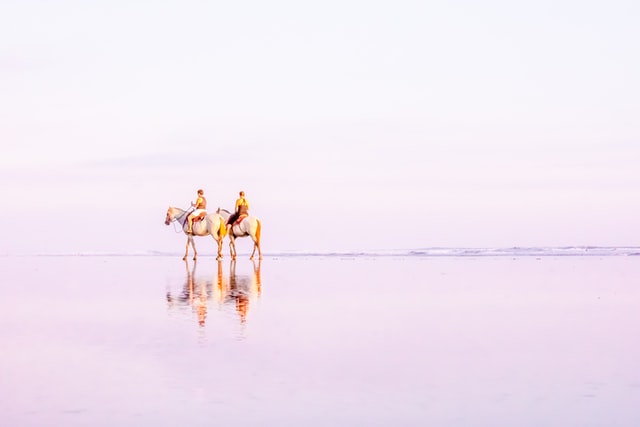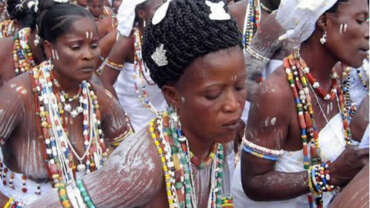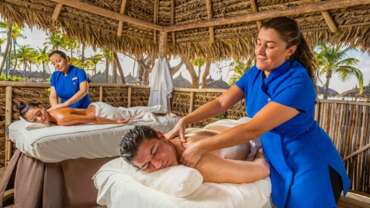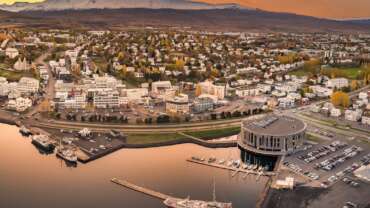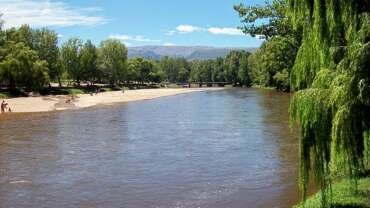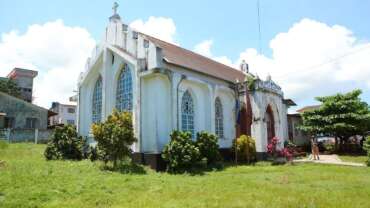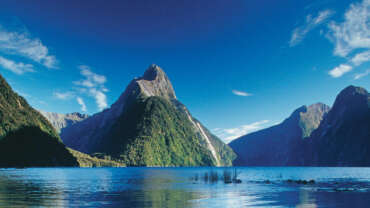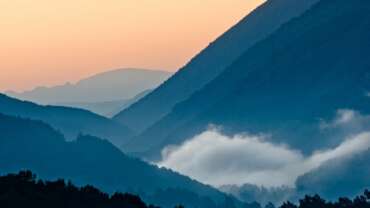Destinations in Costa Rica
GUANACASTE
The cradle of our folklore
With a total of 5,921 sq. miles and more than 400 miles of coast line, the Guanacaste tourism area comprises the Pacific Coast area from the border of Nicaragua to the Bongo River estuary in the Nicoya Peninsula. This tourism area is home to a very important section of Costa Rica’s cultural and natural heritage. This area boasts a significant number of protected areas including water, land, mountain, and coastal ecosystems that are teaming with life.
The incomparable beauty of its landscapes, which ranges from tropical dry forests to lowland mountain forests, its warm climate, as well as its flourishing nature have made Guanacaste one of the most heavily visited areas by locals as well as international tourists and is one of the most developed areas because of its high level of investment in the hotel industry that is in high demand. It also relies on important support by the Tourism Development Center of the Gulf of Papagayo and also relies on the Daniel Oduber International Airport through which arrive a number of charter and commercial flights from the United States.
All along the Guanacaste coastline are a number of beaches where you can swim in their warm Pacific Ocean waters. The coastal landscape is exceptional. There is an array of white-sand beaches and calm, intense-blue waters.
There are two commercial centers located in the northern area: Liberia and Santa Cruz, which, in turn, are linked with five important tourism development centers: Papagayo, El Coco, Flamingo, Conchal, and Tamarindo. In the southern area, the commercial center is Nicoya with Samara being the development center.
Did you know…
Tourist activities in Guanacaste are diverse, including the option for relaxation, health, culture, adventure and nature, as well as sports and recreation.
CARIBBEAN
Costa Rica soul
This tourism area covers 5027 sq. miles with 200 miles of coastline. It makes up the Costa Rican Caribbean, which extends from the San Juan River to the Sixaola River along the Panamanian border. The city of Limón is located in the center of the tourist sector with a port and many tourism areas.
In the northern sector, the main attractions involve the green tortoises nesting grounds along the beaches of the Tortugero National Park and the Barra del Colorado National Wildlife Refuge. This area is known for sport fishing of sea bass, shad, and other species. The aforementioned is complemented by a river system that joins the port of Moín with Barra del Colorado, which is both an attraction, as well as the only means of transportation. Its offers are nature-based, particularly fauna observation, since it is known worldwide for its bird and turtle observing activities.
The area exhibits a unique mix of beach, natural resources and Afro-Caribbean culture in the surrounding areas like Cahuita, Puerto Viejo, and Gandoca-Manzanillo, which are located in the southern sector of the tourism area. Here there are high-quality beaches where you can find a mix of activities involving adventure and natural history, which uniquely complement the local culture, gastronomy, and music. The area is also known for its coral reefs, multi-colored sand beaches (black, yellow, and grey), costal vegetation, and medium-high forests.
Did you know…
The Caribbean has picturesque roads and adventure and leisure sites ideal for biking, with visits to beaches and mountains being the most popular.
PUNTARENAS
The Pearl of the Pacific
The Puntarenas tourist area and the Golfo Islands comprise 1517 sq. miles and 264 miles of coast line. Part of the area’s boundaries is undefined since a part of the Nicoya Peninsula, as well as the city of Puntarenas, fall within this area. The shoreline of both tourism areas is joined by maritime transport. The area extends from Punta Conejo south to Puerto caldera where the mouth of the Bongo River is located.
Puntarenas is one of the most important tourism regions in Costa Rica. Its coastline is full of islands, inlets, beaches, and very beautiful natural treasures, all which make it an excellent tourist destination. There is a multitude of attractions based around the beaches, as well as protected areas, both land based and around its islands. The area’s center is located at Puntarenas which acts as a place for lodging, distribution, port of call, and excursions. Within its tourism locales you can find a variety of hotels and traditional cabins close to the ocean as well as all-inclusive lodging facilities.
This spectacular area is very close to the Central Valley, around two hours by car and 74 miles from the capital.
The peninsula area has very important areas geared toward tourism like, Tambor, Santa Teresa, and Montezuma, all with very beautiful natural areas, specifically its beach areas. You can also find the Cabo Blanco Absolute Nature Reserve, San Lucas, Chira, Tortuga, and Coco Islands.
The Monteverde area, located north of Puntarenas, has both national and international significance because of its conservation efforts and life style centered around nature. Santa Elena is the hub for commercial services and tourism-based businesses. Other important communities are San Luis and Gerardo.
The primary attraction is the Monteverde Biological Reserve, however there are many other nature sites, picturesque trails, hanging bridges, as well as butterfly and frog exhibits.
Did You Know…
The diversity of flora and fauna in natural areas, natural coastal landscapes and cultural aspects make taking pictures and videos one of the most popular activities for tourists.
CENTRAL VALLEY
The heart of Costa Rica
Offers a variety of cultural and natural attractions, including the best museums in the country: Gold, Jade, National, Costa Rican Art, La Salle Natural Sciences, Insects at the University of Costa Rica, Contemporary Arts & Design and Children’s, among others. Also, the architectural jewel of Costa Rica is located here: the National Theatre.
National parks located in the Central Valley protect the region’s primary volcanoes: Poás, Braulio Carrillo, Irazú and Turrialba, all of which have transport and viewing infrastructure allowing visitors to enjoy the birds, landscapes, craters and forests.
The capital San José hosts most government services, but other provincial capitals – Alajuela, Heredia and Cartago – offer a number of commercial and quality tourism services.
The Central Valley has two areas of extraordinary beauty that are tourist destinations in and of themselves: Turrialba and the Valley of the Saints. Rural villages offer great scenic beauty and a glimpse of Costa Rica’s past with adobe houses, large coffee plantations, mills and dairy farms.
Did You Know…
The rural areas of the Central Valley are ideal for tourists to enjoy horseback riding in places like: Turrialba, Santa María de Dota, Atenas, Palmares, Zarcero, Escazú, Santa Ana, and others.
NORTHERN PLAINS
The heat is on
The 33-square-kilometer Arenal Volcano, located 7 kilometers from La Fortuna, has been active since July 29, 1968. It has two different landscapes: one covered with lush vegetation that houses a variety of wildlife, and another rugged area of lava flow and sand as a result of constant eruptions. It is considered the main attraction in the area and can be viewed both during the day and at night to take advantage of its constant eruptions. In addition, this area is known for its hot springs, which provide a unique relaxing environment surrounded by local nature.
With its several protected areas, lakes, lagoons, volcanoes, rivers and waterfalls, the Northern Zone is undergoing a boom in tourism service and adventure site development, so that nature-loving visitors can enjoy the region’s many riches. Thanks to frequent rains, the Northern Zone features wet and evergreen forests as well as fertile plains—natural environments that serve as sanctuaries for water birds, reptiles, mammals and the prehistoric Gaspar fish, and important sites of interest for wildlife-lovers. Adventure activities and nature-watching may be enjoyed on the region’s rivers—Peñas Blancas, San Carlos, Toro, Puerto Viejo and Sarapiquí—some of which are important navigational routes.
Forming part of the region is the Sarapiquí canton, which, with its rich biodiversity, is recognized as a scientific research site and the last stronghold of endangered species such as the great green macaw. The region is famous for the turnos (outdoor parties or festivals) held in its towns, with bull riding and livestock auctions.
Did you know…
Tourist and leisure companies in several communities have created facilities for adventure activities on suspension bridges, nature trails and canopy tours, including: La Fortuna, La Virgen and Puerto Viejo de Sarapiquí.
CENTRAL PACIFIC
Where the forest meet the beaches
This region of the country stretches from the city of Puntarenas to the mouth of the Río Barú in the area known as Dominical de Osa. It has three cities attractive to tourists and well developed for tourism: Quepos, Jacó and Puntarenas. The region also comprises the islands in the Gulf of Nicoya, as these are mainly accessed from Puntarenas.
A wet and rainy climate allows for greater biodiversity in the beaches and hills next to the coast; thus, there is a transition from tropical wet forest to tropical forest to tropical dry forest. These ecosystems provide habitat for numerous plant and animal species that are protected in several wilderness areas. Also included within this zone is Isla del Coco, which, though almost 600 kilometers from the port of Puntarenas, falls under this province’s jurisdiction.
The region’s main attractions are its coast and protected wilderness areas. The coast is made up of numerous beautiful beaches, several of which are less than two hours from San José, allowing for quick access. With regard to wilderness areas, the region features wildlife refuges, national parks and biological preserves.
Other important attractions are of cultural and recreational interest, including the various organized events—especially sporting events—that distinguish the region. Also worthy of note is the scenic beauty along the coastal highway that connects the Caldera area with the Quepos and Manuel Antonio region.
Did You Know…
Manuel Antonio National Park protects 12 islands that are excellent refuges for different species of seabirds.
SOUTH PACIFIC
The most exhuberant place on earth
The entrance door and distribution main center is Pérez Zeledón’s city, its limit extends through the canton’s edge, including the Fila Tinamastes attractions, such as the Cataratas of Nauyaca (waterfalls), Platanillo town and even the Barú River, where the coastal sector, that extends to Punta Burica with a total of 490 km, initiates.
The main activities include beach enjoyment and marine resources, such as whales and dolphin’s observation, as well as mangrove swamp’s, landscapes, reptilian, sport fishing, surfing, hiking through the National Park’s paths, professional diving, the energetic walks to the Chirripo’s summit, botanical gardens, protected areas’ impressive waterfalls… they are all part of the main product offered by the touristic unit that can be reached through this information bureau. Ecotourism features as the main product, especially the one that is carried out among the Humedal Sierpe-Térraba; the Golfo Dulce Forest Reserve, the Ballena Marine National Park, the Isla del Caño Biological Preserve and the Corcovado National Park.
The beach’s tourism possesses a wide potential in the coastal sector of Dominical-Piñuela; Platanares Beach; Zancudo and Pavones. The mountain’s product identifies itself in the Cordillera de Talamanca’s Mountain subunit, where San Gerardo de Rivas and San Vito of Coto Brus stand out as access centers to Chirripó National Park and the Friendship World Patrimony site.
Additionally, there is a high potential in the rural tourism development, in country settlements distributed along the region. Two important protected areas are located in this zone, one is the Corcovado National Park, which National Geographic Magazine defines as “the planet’s biologically richest place” and the Humanity Biosphere Preserve, declared as Humanity Patrimony and part of the Amistad International Park.
The main product is ecotourism, especially in:
Sierpe-Térraba Wetlands
Golfo Dulce Forest Reserve
Marino Ballena National Park
Isla del Caño Biological Reserve
Corcovado National Park
Beach tourism has a large potential in the coastal area of:
Dominical-Piñuela
Platanares Beach
Zancudo and Pavones
The product of mountainous areas is identified by the subunit of the Talamanca mountain range, where San Gerardo de Rivas and San Vito de Coto Brus provide access to the Chirripó National Park and La Amistad World Heritage Site.
Did You Know…
Sport fishing can be enjoyed without hassle due to the richness of the Golfo Dulce and several sites or communities that provide services in a sustainable and responsible manner, including: Puerto Jiménez, Golfito and Zancudo.



